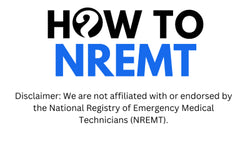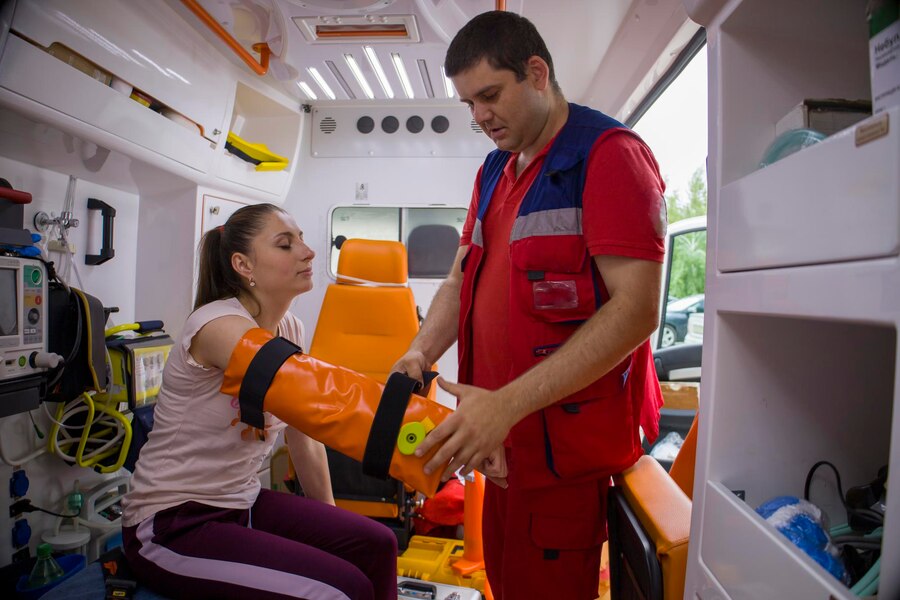EMTs are the heart of a region when emergencies strike. It’s especially true for Oklahoma due to its geographic diversity. EMTs play a key role on the scene and tend to patients and other individuals needing support.
If you’re also one of the individuals looking to embark on this journey, it’s important to understand the process involved in getting certified. This step-by-step guide outlines the requirements, course domains, and how you can ensure success on your first attempt.
Here’s how to earn your EMT credential in Oklahoma and study smart from day one.
Step 01

Make Sure You Qualify
Before applying to training, confirm you meet basic requirements:
- At least 18 years old
- High school diploma or GED
- Valid CPR certification (BLS for Healthcare Providers)
- Physical and mental fitness for EMS work
- Completed background check
- Proof of immunizations including MMR, Hepatitis B, Tdap, and Varicella.
- Non-US citizens must verify their lawful presence
Once eligible, you can start training.
Step 02

Complete an Oklahoma-Approved EMT Course
Candidates must enroll in and complete a state-approved EMT training. The Oklahoma State Department of Health, EMS and Trauma System oversees these programs.
Training programs are available through:
- Community colleges
- EMS training centers
- Fire department academies
Each course includes:
- Classroom lessons
- Skills labs
- Clinical or ride-along field experience
Completing this program qualifies you to take the NREMT cognitive exam.
Step 03

Pass the NREMT Cognitive Exam
The cognitive exam is an important milestone in your journey to becoming an EMT. The NREMT cognitive exam is a computer-adaptive test (CAT). This means the test adjusts its difficulty level based on your answers. The National Registry has updated the course domains keeping in mind current patient care needs. Expect 70–120 questions across five updated domains:
- Scene Size-Up and Safety
- Primary Assessment
- Secondary Assessment
- Patient Treatment and Transport
- Operations
Note: Items related to pediatric patient care are integrated throughout all domains.
The cognitive exam format doesn’t just measure how many facts you know. Instead, how you can apply those facts in real-time emergencies. That’s why the best way to study for NREMT is through tools that mirror real test conditions: NREMT practice exams, focused NREMT prep class, and coaching from an NREMT prep tutor.
Step 04

Apply for Oklahoma EMT Certification
Once you complete your state-approved EMT training and pass the NREMT cognitive exam, you can apply for EMT licensure through the Oklahoma EMS Personnel Licensure Portal.
Here are the documents you’ll be required to upload:
- Proof of course completion
- NREMT cognitive exam results
- CPR certification
- Background check and fingerprinting
- Application and fee payment
After review, you’ll receive your official EMT certification.
Step 05

Maintain Your EMT Certification
Oklahoma EMT certifications are valid for two years. Candidates must renew their certificate every year twos. For renewal, you’ll need:
- A current CPR certification
- Required continuing education hours
- Renewed NREMT credential or state CE compliance
If you miss a deadline and you may need to retake the NREMT exam. It’s simpler to stay up to date.
National vs. Oklahoma EMT Certification
Here’s a quick comparison of national and state requirements:
| Requirement | NREMT | Oklahoma |
|---|---|---|
| NREMT cognitive exam | Required | Required |
| CPR certification | Required | Required |
| State-approved EMT training | Required | Required |
| Background check | Not required | Required |
| Psychomotor skills test | Discontinued | Required |
| State application | Not applicable | Required |
Note: The ALS psychomotor skills test is no longer required by the National Registry. It’s only a state-level requirement.

- Choosing a selection results in a full page refresh.




